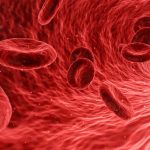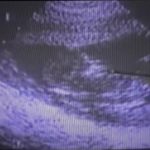The Science
Human knowledge has increased–and continues to increase–over time. Where once humans thought the earth as a whole was flat, we now have scientific evidence to support our knowledge that the earth is round. So when it comes to the personhood of gestational children, where does science stand? Is there any scientific evidence to validate the experiences of thousands [We know you’re out there. Don’t be shy. Babies’ lives are at stake.] of women?
On this page, you’ll find a few of the research articles, scientific studies, and scientific evidence that indicates the science that supports life begins at conception.
A Child Is Born
Consciousness without a cerbral cortex: A challenge for neuroscience and medicine
Consciousness in congenitally decorticate children: developmental vegetative state as self-fulfilling prophecy
The First Ache
Tridimensional Visualization and Analysis of Early Human Development
Transfer of fetal cells with multilineage potential to maternal tissue
Naturally acquired microchimerism
Male fetal progenitor cells persist in maternal blood for as long as 27 years postpartum
Early detection and staging of spontaneous embryo resorption by ultrasound biomicroscopy in murine pregnancy
Answering the Pain Deniers
Stimulation of the human cortex and the experience of pain: Wilder Penfield’s observations revisited

A Child Is Born
A Child Is Born is a book by Lennart Nilsson and Lars Hamberger, revised in 2003. Life’s milestones: Below is a list counting down some (though not all) of the highlights of our gestational lives. The timeframe is given as weeks since conception (wc) or days since conception (dc).
• 38 wc – You are full-term and ready to be born.
• 21 wc – If you are born premature, you can survive and develop normally with advanced medical treatment.
Read about the development between 17 weeks and 15 days in our book, When Unborn Babies Speak.
• 15 – 10 dc – Your neural tube forms, your primitive brain begins to form at one end of the tube, nerve fibers begin to protrude from the brain stem, and the spinal cord starts to form.
• 10 – 7 dc – Your mother may notice an increased sensitivity to smell, and her breasts are likely becoming very tender.
• 8 dc – You have implanted in your mother’s uterine lining, and you have entered an intimate alliance with your mother. A small number of your cells can cross into your mother’s system.
• 5 dc – You consist of several hundred cells, all of which contain the same genetic code. At this point the first clear division of tasks among the cells can be detected, and the potential of each individual cell is radically restricted. Now, no one cell can express the entire code at once, and only part of it is expressed in each of your cells. Some cells will develop into the embryo while others will become the placenta.
• 1 dc – The nuclei (of the sperm and the egg) are drawn inexorably toward each other. When they meet, their genetic material combines as they fuse together. At this instant, a unique genetic code for you is created. Everything about you that is strictly genetic—that is not influenced by your environment—is fully determined and knit together as of that one instant in time.
The pictures are phenomenal (once you skip past the adult portions). For more on this book, check out our Book Review-A Child is Born, go to a library, or shop online or at a bookstore.
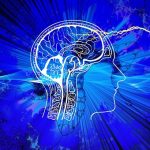
Consciousness without a cerbral cortex: A challenge for neuroscience and medicine
Consciousness without a cerbral cortex: A challenge for neuroscience and medicine is a 2007 article by Bjorn Merker which challenges the conventional wisdom that consciousness is a function of the cerebral cortex.
See the implications of this in our book, When Unborn Babies Speak.
For more on this article, go to Consciousness without a cerbral cortex: A challenge for neuroscience and medicine.

Consciousness in congenitally decorticate children: developmental vegetative state as self-fulfilling prophecy.
Consciousness in congenitally decorticate children: developmental vegetative state as self-fulfilling prophecy is a 1999 report discussing the possibility that labeling individuals born without most or all of their cortex as being in a never-ending vegetative state results in them being treated that way and they respond accordingly.
See what happens when this is reviewed in our book, When Unborn Babies Speak.
For more on this article, go to Consciousness in congenitally decorticate children: developmental vegetative state as self-fulfilling prophecy.
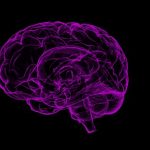
The First Ache
Book excerpt: The First Ache is an article by Annie Murphy Paul published February 10, 2008. Once it was thought that the cerebral cortex is what houses consciousness. But the subplate zone and the brain stem forms and activates much earlier than our cerebral cortex. The article discusses the possibility that if the brain stem supports consciousness, it would provide the “missing link” that the embryo or fetus can experience pain. For more on this article, see Article Review-The First Ache.
In one of the letters to the editor (posted 2/24/08) for this article, W. S., commented, “As a mother, I was disappointed to read that “the starts and kicks felt by a pregnant woman” are mere reflexes, according to David Mellor. Doesn’t he realize that babies in the womb sometimes play with their mothers? Mother pokes baby, baby kicks back. Mother pokes twice, baby kicks twice….” [See…we know you’re out there.]
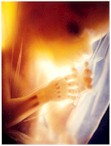
Tridimensional Visualization and Analysis of Early Human Development
Tridimensional Visualization and Analysis of Early Human Development, published in March 2017, is a scientific study which used technology to show the establishment of “adult-like” nerve patterns in the embryo and fetus during the first trimester of pregnancy.
The technology used involved 3D, cellular level images of human embryos aged from 4 to 12 weeks post-fertilization (6 to 14 weeks gestation). Nerve, muscular, cardiovascular, and other organ system development images were remarkably captured.
For more on this article, go to Tridimensional Visualization and Analysis of Early Human Development.
Transfer of fetal cells with multilineage potential to maternal tissue
Transfer of fetal cells with multilineage potential to maternal tissue, published in 2004, was a follow-up on several studies that had previously detected fetal cells in a woman’s tissues and blood after pregnancy.
Find comfort from this article in our book, When Unborn Babies Speak.
Read this article here: Transfer of fetal cells with multilineage potential to maternal tissue. Or, for an easier read, go to this version on The Embryo Project Encyclopedia.
Naturally acquired microchimerism
Naturally acquired microchimerism, as sourced below, was the author’s manuscript published in 2010. It is a little easier to read than the article above, and delves into topics such as prenatal diagnosis, pregnancy complications, long-term complications, variations in transfer amounts, and more.
See the importance of this affecting miscarriages and abortions in our book, When Unborn Babies Speak.
To access this article, go to Naturally acquired microchimerism.

Male fetal progenitor cells persist in maternal blood for as long as 27 years postpartum
Male fetal progenitor cells persist in maternal blood for as long as 27 years postpartum is a 1996 study with similar findings (within the scope of their testing) as the other microchimerism studies mentioned here.
Gain comfort from this article in our book, When Unborn Babies Speak.
To access this article, go to Male fetal progenitor cells persist in maternal blood for as long as 27 years postpartum.
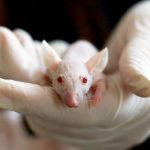
Early detection and staging of spontaneous embryo resorption by ultrasound biomicroscopy in murine pregnancy
Early detection and staging of spontaneous embryo resorption by ultrasound biomicroscopy in murine pregnancy is a 2014 study performed on mice (because comparable studies on humans would raise ethical considerations).
This study is of interest in particular for comforting the mothers whose ultrasound revealed an empty sac…
Validation abounds in the elaboration of this article in our book, When Unborn Babies Speak.
To see this article, go to Early detection and staging of spontaneous embryo resorption by ultrasound biomicroscopy in murine pregnancy.
Answering the Pain Deniers
Book excerpt: Answering the Pain Deniers provides medically-sourced responses to three common arguments against the 20-week they feel pain movement on fetal pain-capability. The article is well written and provides a lengthy list of resource material.
While this article focuses on the ability of the human fetus to feel pain by their 20th week, we maintain our testimony and assertion from personal experience that our gestational babies are capable of feeling the pain of their death at less than 8 weeks post-conception. And, depending on the source, the baby desperately protesting being aborted in A Silent Scream, felt pain by the 11th to 14th week of gestation.
For more on this article, see our Article Review-Answering the Pain Deniers.
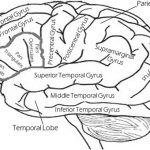
Stimulation of the human cortex and the experience of pain: Wilder Penfield’s observations revisited
Stimulation of the human cortex and the experience of pain: Wilder Penfield’s observations revisited is an article published in October 2011 which discussed the findings of research aimed to determine where and whether pain responses would be detected from stimulation of different areas in the cerebral cortex.
Read why this is important in our book, When Unborn Babies Speak.
To access this article, go to Stimulation of the human cortex and the experience of pain: Wilder Penfield’s observations revisited.
